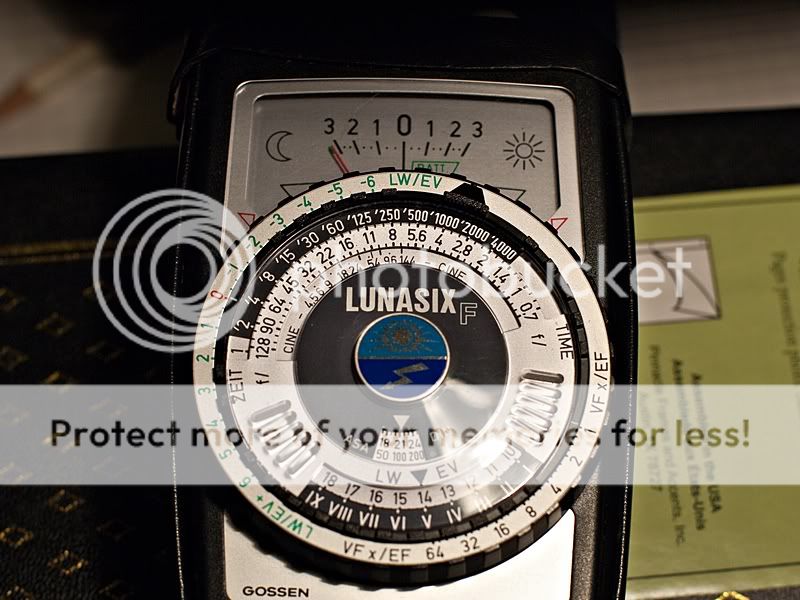Ron Evers
Been spending a lot of time on here!
- Joined
- Jun 28, 2008
- Messages
- 6,631
- Reaction score
- 2,588
- Can others edit my Photos
- Photos OK to edit
So I decided to move it to a new thread so it would have a better chance of being viewed.
I think it is to bad most folk never learned the exposure triangle by using a light meter. A light meter makes it so easy to understand. I will present an example here.
First you would set the ASA/ISO speed (white triangle below centre) on the meter, in this case 100 & then take a light reading of the subject. The meter would then tell you which combination of shutter speed & aperture would properly expose the subject. In the photo below you see the shutter speeds (time) in the black ring & the corresponding f stops in the white ring below. So, in the case of this reading any of the following exposures would equal the same result.
60/f16
125/f11
250/f8
500/f5.6

If the meter had been set @ ASA/ISO 200 the readings would be:
125/f16
250/f11
500/8
& so on.
I hope some folk will find this helpful.
I think it is to bad most folk never learned the exposure triangle by using a light meter. A light meter makes it so easy to understand. I will present an example here.
First you would set the ASA/ISO speed (white triangle below centre) on the meter, in this case 100 & then take a light reading of the subject. The meter would then tell you which combination of shutter speed & aperture would properly expose the subject. In the photo below you see the shutter speeds (time) in the black ring & the corresponding f stops in the white ring below. So, in the case of this reading any of the following exposures would equal the same result.
60/f16
125/f11
250/f8
500/f5.6

If the meter had been set @ ASA/ISO 200 the readings would be:
125/f16
250/f11
500/8
& so on.
I hope some folk will find this helpful.





![[No title]](/data/xfmg/thumbnail/32/32177-3a3d923fa1584c6ef7d6602aaa24fbc6.jpg?1734161047)






